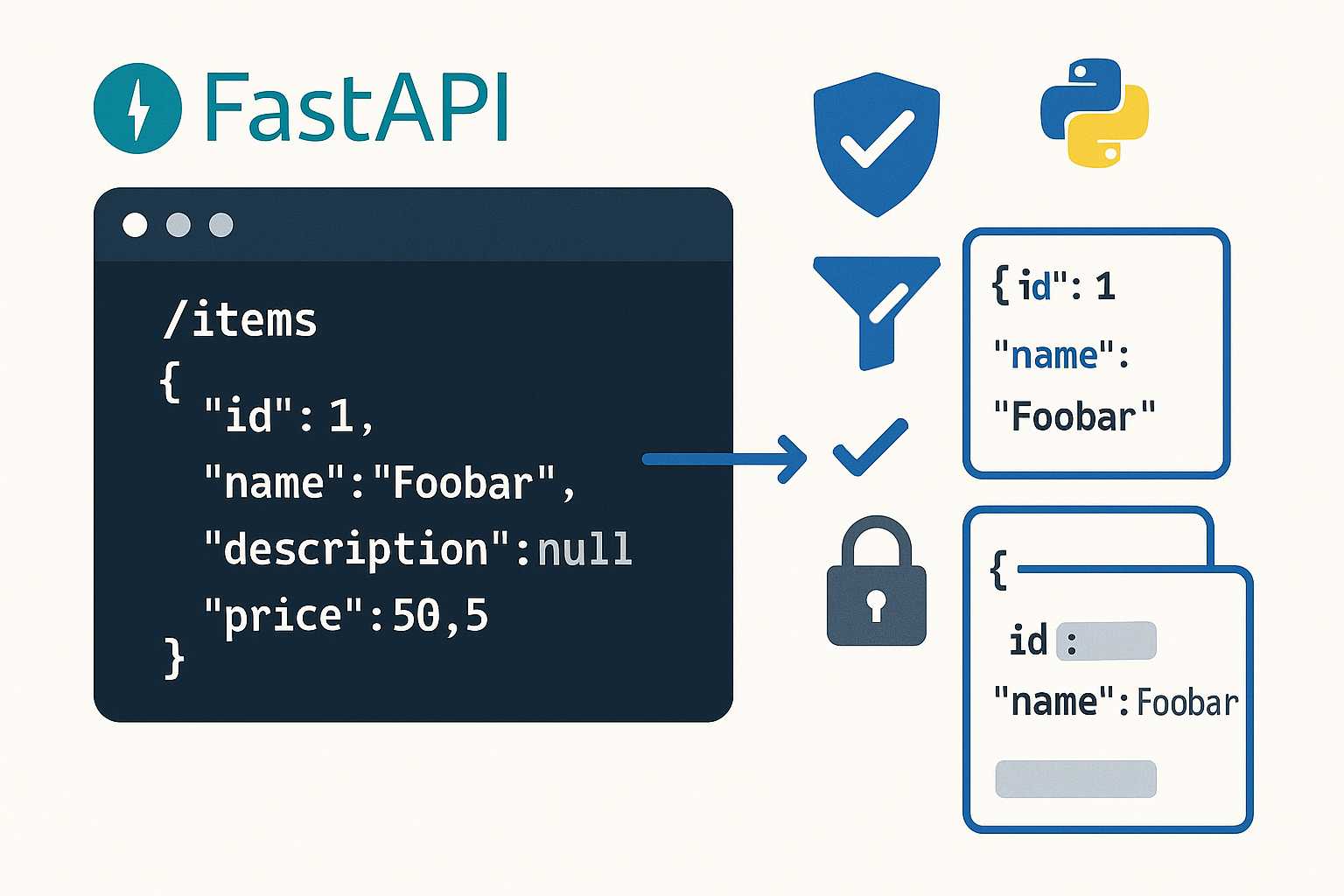One of FastAPI’s greatest strengths lies in its integration with Python type hints and Pydantic models. This lets you define input and output data structures—including validations and serialization—right at the endpoint level. In practical API development, mastering response models pays off both for self-documented code and robust, reliable interfaces. In this article, let’s dive deep into effective techniques for using response models in FastAPI, covering validation, serialization, and some advanced customizations.
Why Use Response Models?
By setting a response_model on your FastAPI endpoints, you’re describing exactly what shape the output will have. FastAPI leverages Pydantic’s data validation and parsing powers:
- Automatic serialization: Converts your returned objects (like ORM models) into JSON-ready dicts.
- Validation: Ensures output data conforms to your declared schema—making those OpenAPI docs accurate and actionable.
- Filtering: Only models fields defined in
response_modelare exposed—great for hiding sensitive data.
Basic Usage
Here’s a typical pattern:
from fastapi import FastAPI
from pydantic import BaseModel
app = FastAPI()
class User(BaseModel):
id: int
username: str
email: str
@app.get("/users/{user_id}", response_model=User)
def get_user(user_id: int):
db_obj = get_user_from_database(user_id)
return db_obj
Even if db_obj contains extra internal fields (like password_hash), FastAPI will filter them based on the User model.
Advanced Techniques: Nested Models and Lists
Response models can be nested or represent lists directly:
class Profile(BaseModel):
bio: str
twitter: str
class UserWithProfile(User):
profile: Profile
@app.get("/users/{user_id}/profile", response_model=UserWithProfile)
def get_user_profile(user_id: int):
# ...
pass
@app.get("/users", response_model=List[User])
def list_users():
# ...
pass
Customizing Responses: Exclude/Include Fields
Sometimes you need to fine-tune serialization beyond the model defaults. FastAPI’s response_model_include and response_model_exclude kwargs make this easy:
@app.get("/users/me", response_model=User, response_model_exclude={"email"})
def get_me():
# ...
pass
You can also use field aliases and Pydantic’s config for renaming or aliasing fields in the JSON response.
Returning Arbitrary Responses: The response_model Override
There might be situations where you need advanced control, such as returning raw bytes, files, or custom headers. In such cases, return a Response or StreamingResponse and omit or adjust the response_model hint:
from fastapi.responses import FileResponse
@app.get("/download")
def download_file():
return FileResponse(path="/tmp/somefile.zip")
Validating Output for Consistency
FastAPI will validate and serialize your returned data, even after any business logic, just before sending the response. This guards against unintentional data leaks or mismatches.
Tip: Response Models for Error Responses
Although most examples focus on successful responses, you can—and should—define models for error responses in responses argument or use exception handlers for structured error output.
Conclusion
Harnessing FastAPI’s response models brings you stricter, safer, and more maintainable APIs. You get data validation on both ends, output filtering, and auto-updating OpenAPI docs. Familiarize yourself with Pydantic’s features and FastAPI’s kwargs like response_model_include/exclude to tailor your APIs even further.
Happy coding—enjoy crisp, reliable responses!
– Fast Eddy


Leave a Reply